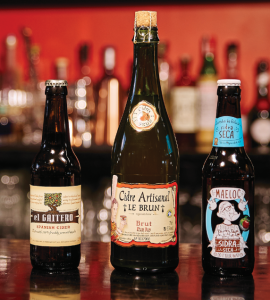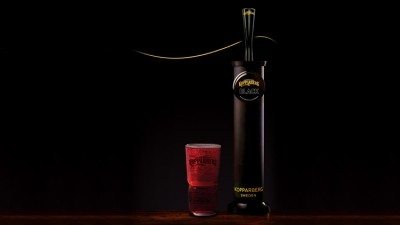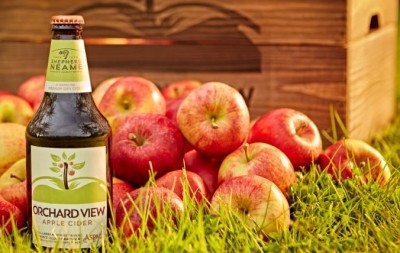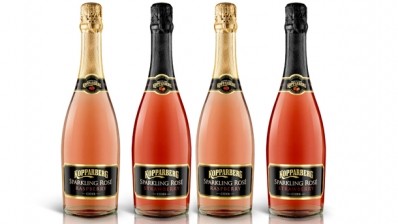Cider
Cider is taking a new direction
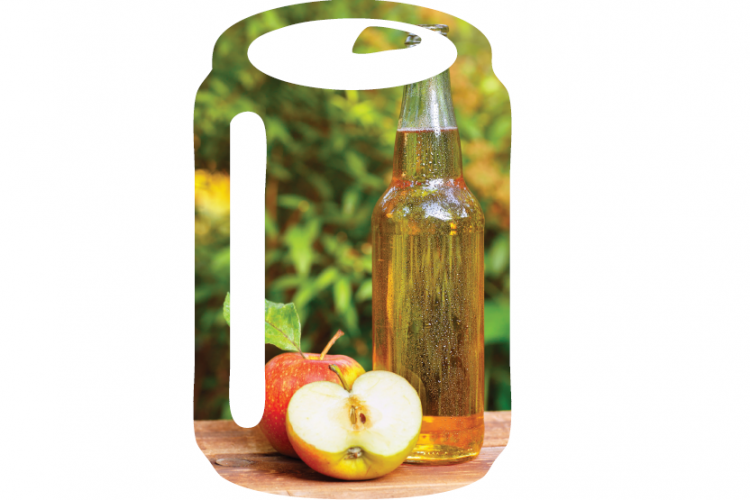
If you were to pitch a new packaged cider on Dragon’s Den you could expect a rough ride, with the entrepreneurs likely to be quick to point out the declining market, a proliferation of competing brands and how there would be nothing to stop someone else replicating what you’re doing at a stroke should it prove to be successful, before declaring themselves out with a withering look.
Thankfully, the drinks market doesn’t quite work like that. Wide choice is a strength, not a weakness, and producers are agile enough to quickly move on to the next thing if a category niche becomes saturated. Even a dip in sales for a sub-set of the market is frequently cast as an opportunity rather than a signal that the game’s up.
So despite a decline of 2.7% in volumes in the year to June 6 [CGA Strategy], pockets of growth in certain segments, coupled with an ongoing rush to bring new products to market, gives packaged cider the feel of a vibrant category for pubs to get their teeth stuck into.
CGA reports there have been 68 pieces of packaged cider new product development (NPD) brought to the market in the past two years, and perhaps surprisingly, 47% of these were in apple cider, a packaged cider segment that saw a 15.1% decline in the year to June.
Fruit cider, which contributed most growth to bottled cider with an uplift of 9.1% across the year, accounted for exactly half of the NPD, with pear – in sales decline of 25.9% – making up the numbers.
While draught cider innovation has been dominated by a single brand, Strongbow Dark Fruits, packaged cider has become an NPD battleground across the sector.
This relentless pace of innovation poses difficult questions for publicans about how to manage the range they put in the fridge, particularly with the increasing pressure on space posed by other boom categories like craft beer and sparkling wine.
“The aim should be to give as wide a choice as possible,” says Graeme Craig, director of brewing and brands at Shepherd Neame, which began selling Angry Orchard cider from the Boston Beer Co in the US in summer 2015. “Don’t have three or four products that are all doing the same job.
“There’s no point in having two or three locally-produced cider’s that are pretty similar, so have one locally-produced one, one world cider and a couple of fruits,” he suggests.
Ever since over-ice Magners gave bottled cider a new identity at the turn of the century, there has been no shortage of suppliers attempting to cash in on its popularity.
Both Magners and Bulmers have been subject to brand overhauls this year as the modern cider segment struggles for growth, though both brands retain places in the top five on-trade packaged cider brands.
Andy Turner, category and trade marketing director at Bulmers supplier Heineken, says: “It was four years since the last redesign, so it was the right time to bring the identity up to date.”
The brand also reduced its bottle size from 56.8cl to 50cl, a move that Heineken hopes will make Bulmers more accessible and attractive to consumers, especially women.
The main challenge
The main challenge faced by Magners and Bulmers in recent years has come from fruit cider, particularly the Swedish brands Kopparberg and Rekorderlig, which Heineken responded directly to with Kiwi Old Mout, a brand Turner says is about “fun, adventure and quirkiness”.
Suppliers’ top tips:
Rob Salvesen, customer marketing manager, Kopparberg: “Ensure your staff are well educated on the products they are serving. Educated bar staff will deliver the perfect serve, communicate flavour profiles and provenance – which will indicate why a consumer might pay more for a particular product – and offer food pairing advice. All these elements will surprise and delight consumers, keep them coming back to your outlet and lead to incremental sales.”
Graeme Craig, director of brewing and brands, Shepherd Neame: “Try to understand your customer base. If craft beer is doing well in your pub then craft ciders might also go well. If you’re more led by mixed drinks or cocktails then focus on fruit flavoured ciders. List new products if they fit the customer base. Don’t just go with the next new thing just because it is the next new thing.”
Yvonne Flannery, marketing director, Thatchers: “Landlords should try making displays of bottled cider on the back bar in ice buckets. Take one of each product out and show people what you’ve got in the fridge.”
Geoff Bradman, commercial director, Westons: “Don’t be afraid to try different products. Some of the attractions of packaged cider is that it’s a great way to change and refresh the range easily and quickly.”
The arrival of mass-market fruit ciders was the next great step-change after Magners and Bulmers, and the into cider move by big brands in other drinks categories was arguably another.
Lager brands Carling and Stella Artois were among the first, while Diageo is a more recent entrant with first Pimm’s Cider and then, this year, Smirnoff Cider, which comes in Passionfruit & Lime and Raspberry Pomegranate flavours.
Innovation commercialisation manager Claire O’Neill says: “We still see there is potential to grow the category even further. By entering the fruit cider category under the strength of the Smirnoff brand name, and with two original flavour offerings, we’re confident Smirnoff will take cider to the next level.”
Heineken is another major supplier taking a calculated point on the fledgling spirit-cider segment with its launch of Blind Pig, which comes in Rum & Poached Pear, Bourbon & Blueberry and Whiskey Honey & Apple varieties.
After a limited test run last year, the brand has hit the ground running with some tweaks. A paper wrap on the bottle has gone to ease service and improve back bar visibility, the ABV has gone up from 4% to 5.5% and the pack size has shrunk from 50cl to 35.5cl.
“We learned a lot from the test, changed a couple of things and think we’ve got the proposition right,” says Turner. “The aim is to make cider a drink that’s a credible choice later in the evening in slightly more up-tempo occasions.”
World cider is another emerging bottled cider segment, and Craig at Shepherd Neame argues that Angry Orchard, the number one cider in the US, extends the scope of the category as a whole.
“It falls into the same sort of category as lesser-known craft domestic brands,” he says. “People want to see something they’re intrigued by. It gives us a different consumer from real ale. We’ve found it gives us a platform to reach women and a younger audience.”
Elsewhere, the fragmentation of packaged cider is taking it out of bottles completely. Westons is attempting to emulate the success of 33cl craft beer in cans in its bid to take a share of the cider fridge in pubs, where its does the majority of its business on draught.
Its two Caple Rd ciders have been followed into the format by Flat Tyre Rhubarb and Hand Brake Damson flavours of its Rosie’s Pig brand.
“There’s a clear difference between traditional ciders and these types of modern craft cider,” says Westons commercial director Geoff Bradman. “Craft ciders are small-batch production with more challenging, focused flavour profiles. For certain types of consumer, cans are more appealing than bottles.
‘Limited fridge space’
“Where fridge space is limited and throughput is high, cans will chill quicker than bottles and the display is more striking because you can get more of them in the fridge. There are lots of small things that add up in their favour.”
Others have gone all misty-eyed with nostalgia and taken the cloudy cider route, like Thatcher’s with its Haze, initially launched as Somerset Haze last year, but now with a slimmed down name.
The race for space
Getting the right range of packaged cider in the fridge can be a difficult balancing act, with limited room available and other categories competing for space.
Westons Cider Report, published in the spring, says that the average on-trade outlet is stocking 4.4 ciders in the fridge and that to be in line with the category profile, pubs should consider stocking two apple ciders, two fruit ciders and one pear.
It recommends brand blocking to make it easier for customers to make a choice and using a drinks menu to ease pre-selection before visiting the bar.
“My aim would be to do something completely different to what’s on the bar, so don’t just replicate the draught offering,” says Weston’s Geoff Bradman.
Andy Turner at Heineken says avoid listing competing brands. “Either go with Bulmers or Magners, or one of Old Mout, Kopparberg or Rekorderlig, but don’t try to have it all because you don’t get brand standout in the fridge.
“Make sure you have a price ladder to trade people up.”
Yvonne Flannery at Thatchers argues that there should be room for a speciality cider in every fridge. “The mix needs to change to be broader, with speciality ciders – and some apple in particular – in there,” she argues.
Marketing director Yvonne Flannery says: “Cloudy cider is bringing in new drinkers who are coming from lager and wine, as well as fruit cider.
“It has a slightly sweeter profile and attracts different types of customers than Thatcher’s Gold, which is a drier style.
“Cloudy cider has been going for years but we’ve bought it to a more modern drinker. It’s not as challenging as old-fashioned cloudy ciders.”
Thatchers also makes Hazy Hog, the bottled cider brand marketed by Surrey brewer Hogs Back. Managing director Rupert Thompson says it too tries to bring a modern feel to traditional cider.
“The original consumers who discovered the cider category through mainstream brands and flavoured variants are now that bit older and looking for more authentic ciders with genuine provenance,” he says.
“However, they are also very brand aware and old-fashioned scrumpy style imagery just doesn’t appeal.”
There’s little sign of the thirst for innovation in packaged cider drying up, with micro-niches being opened up by smaller producers, such as Scotland’s Thistly Cross making cider aged in single malt whisky casks, and Garden Cider, which produces cider on a Surrey farm from windfall apples donated by households in return for a free supply of the finished product. Its latest 50cl bottle is a Raspberry & Rhubarb flavour.
Further up the fruit chain, Heineken’s Stassen is seeking to expand the cider-with-food market that Thatchers has championed with brands like its single varietal Katy’s and that boutique cider producers such as Cornwall’s Pilton have a eye on, with its wine-style 75cl bottles.
It’s an opportunity not to be overlooked, says Rachael Chard, account director at CGA Strategy. “Packaged cider drinkers tend to eat out of home more than average, particularly apple cider drinkers, so for the food-led occasion pubs do need to focus on apple,” she says.
Expect more new-direction innovation in 2017. Turner is promising that pipeline NPD for Bulmers will take it in “a different direction from just the next flavours” when it hits the market early next year, while Westons is sifting the results of consumer research on a raft of new craft can ideas before settling on new launches for next year.
As Flannery at Thatchers says: “Bottled cider is a great place for pubs to trial innovation, keep their ranges fresh and to keep people coming back week after week.”
Somebody better tell the Dragons.
